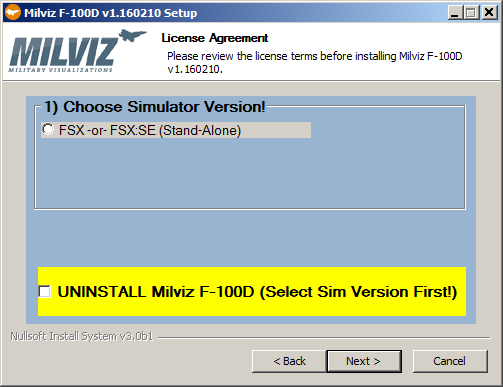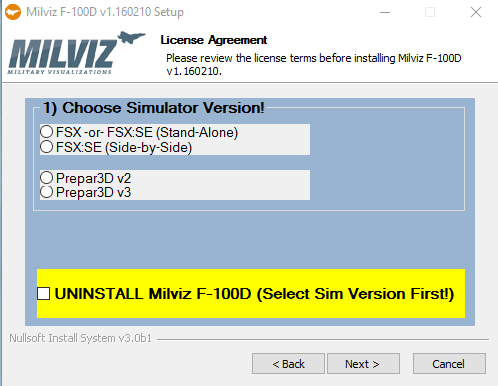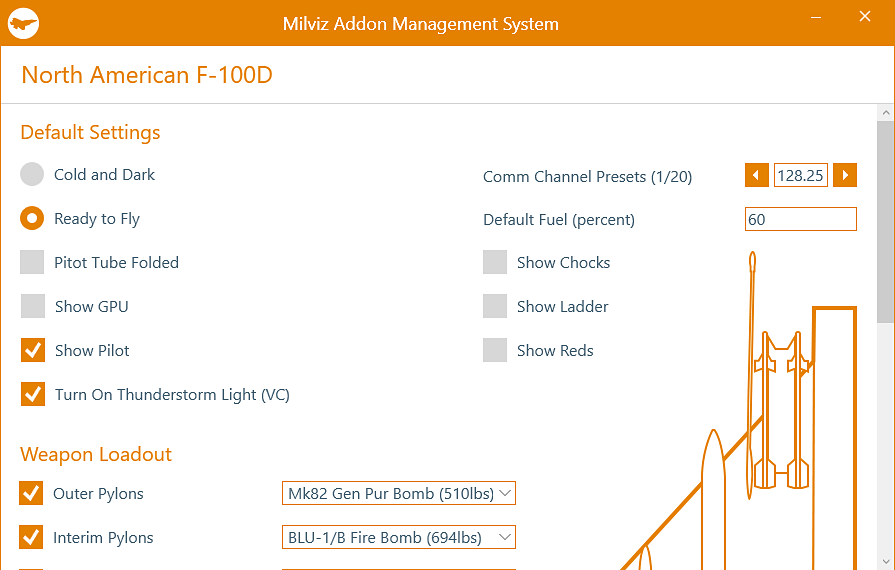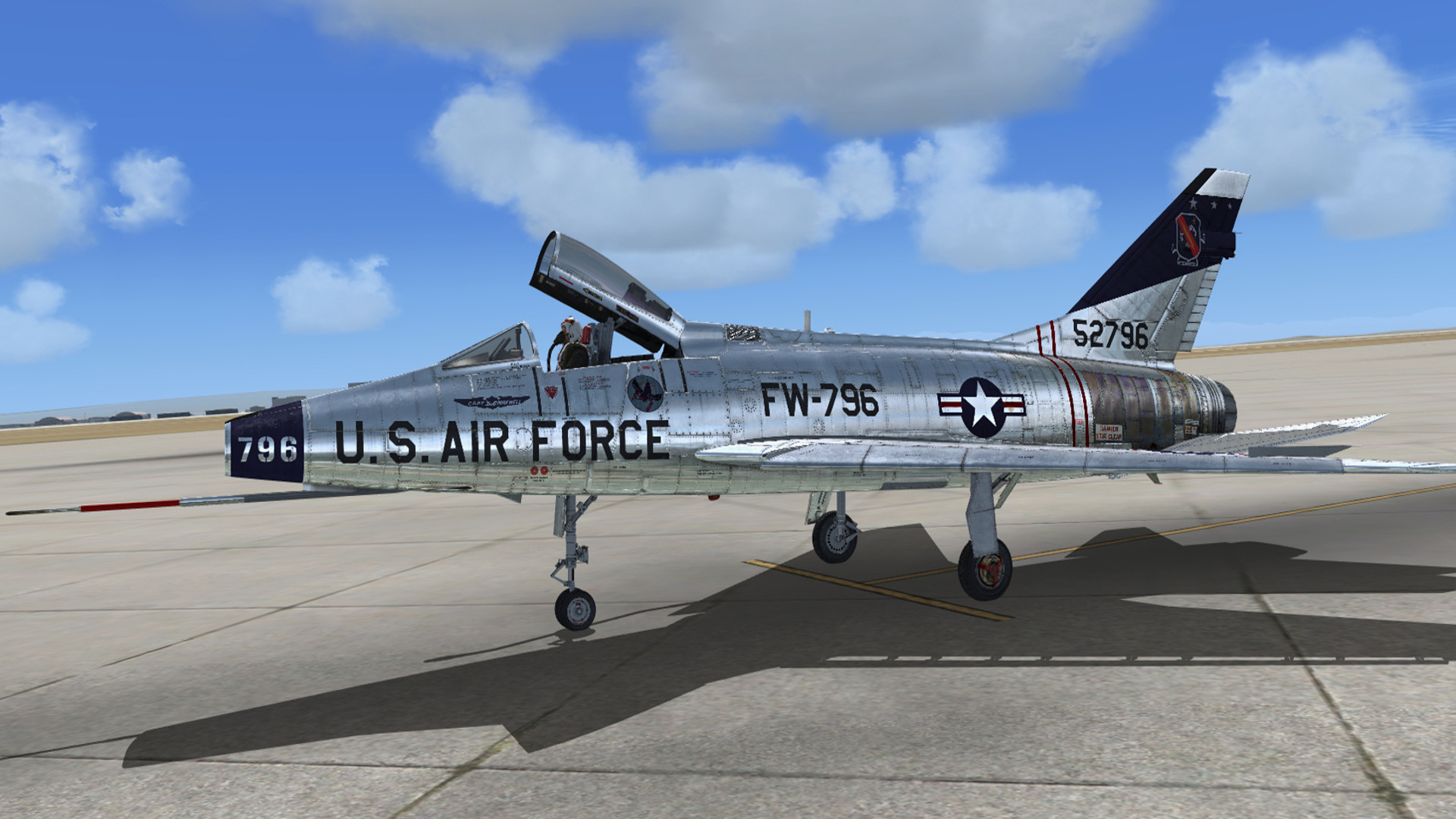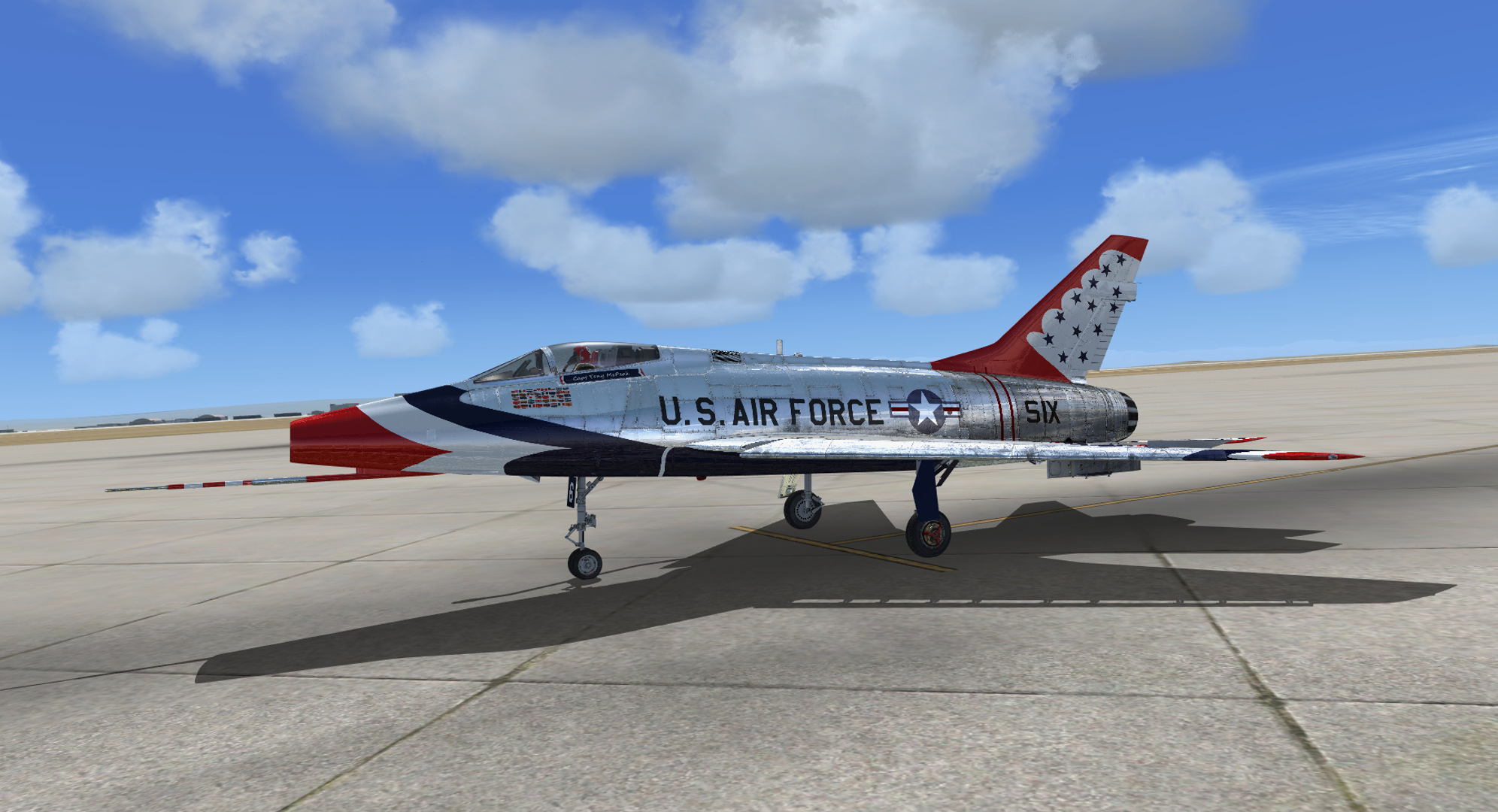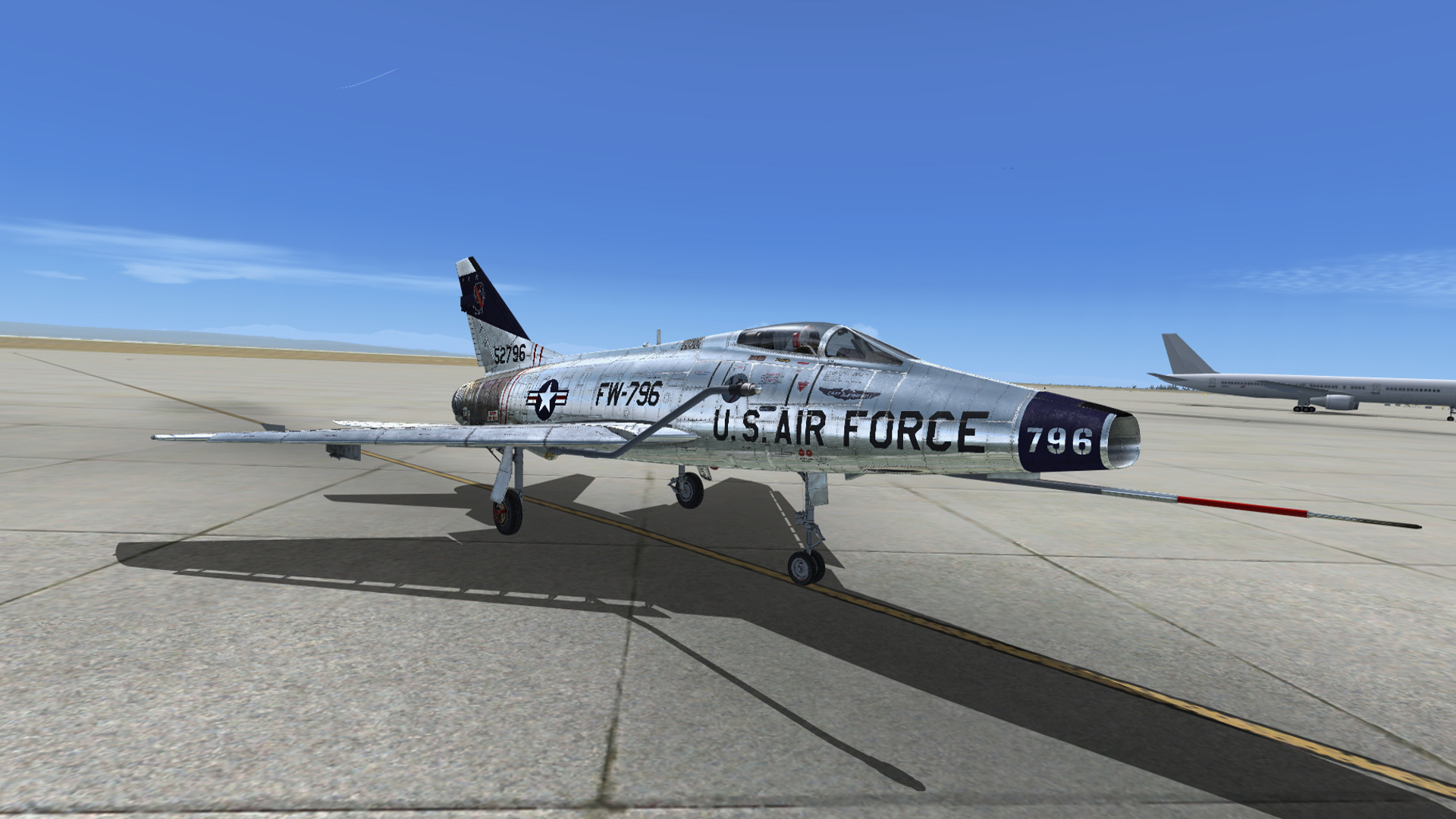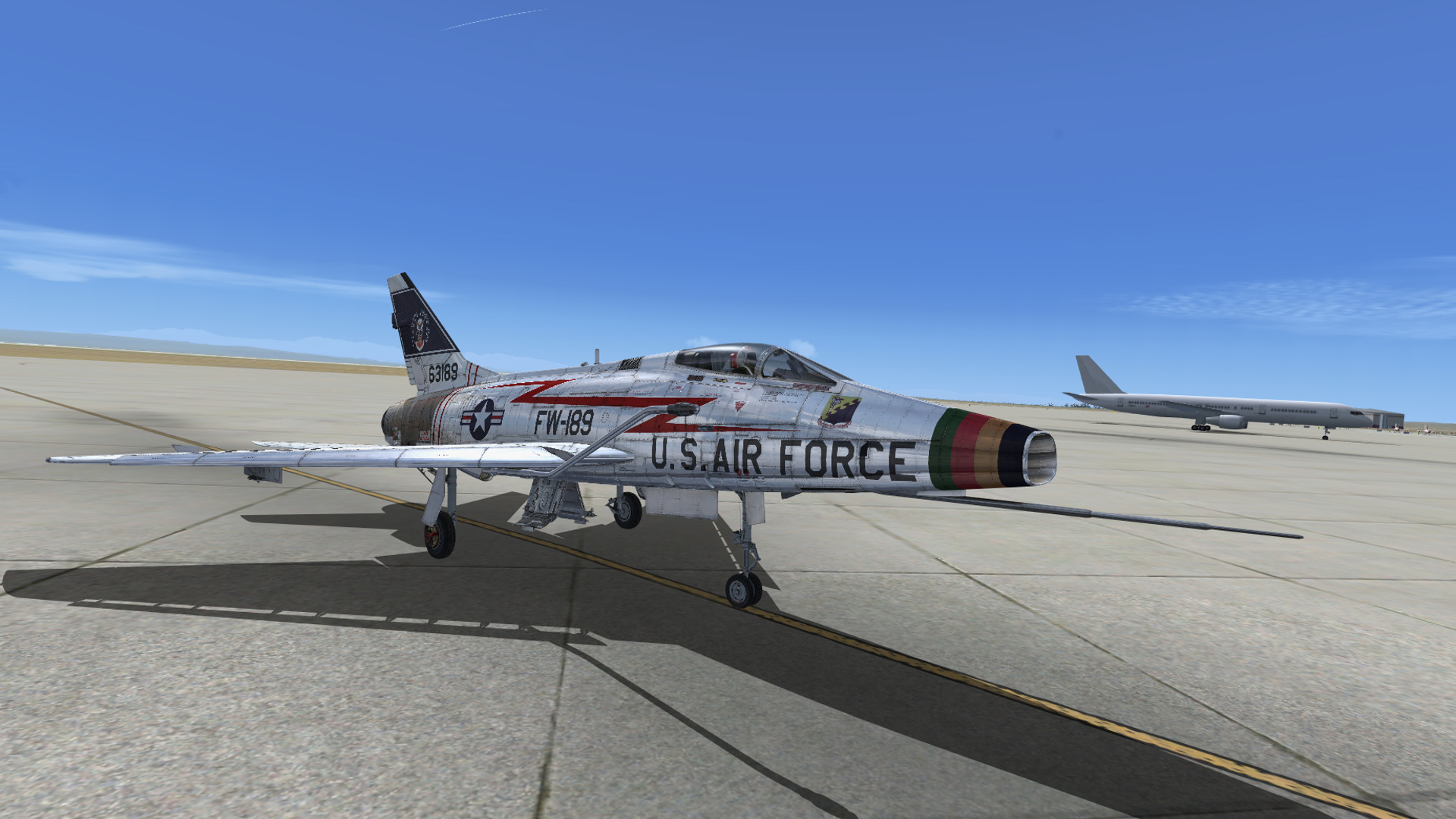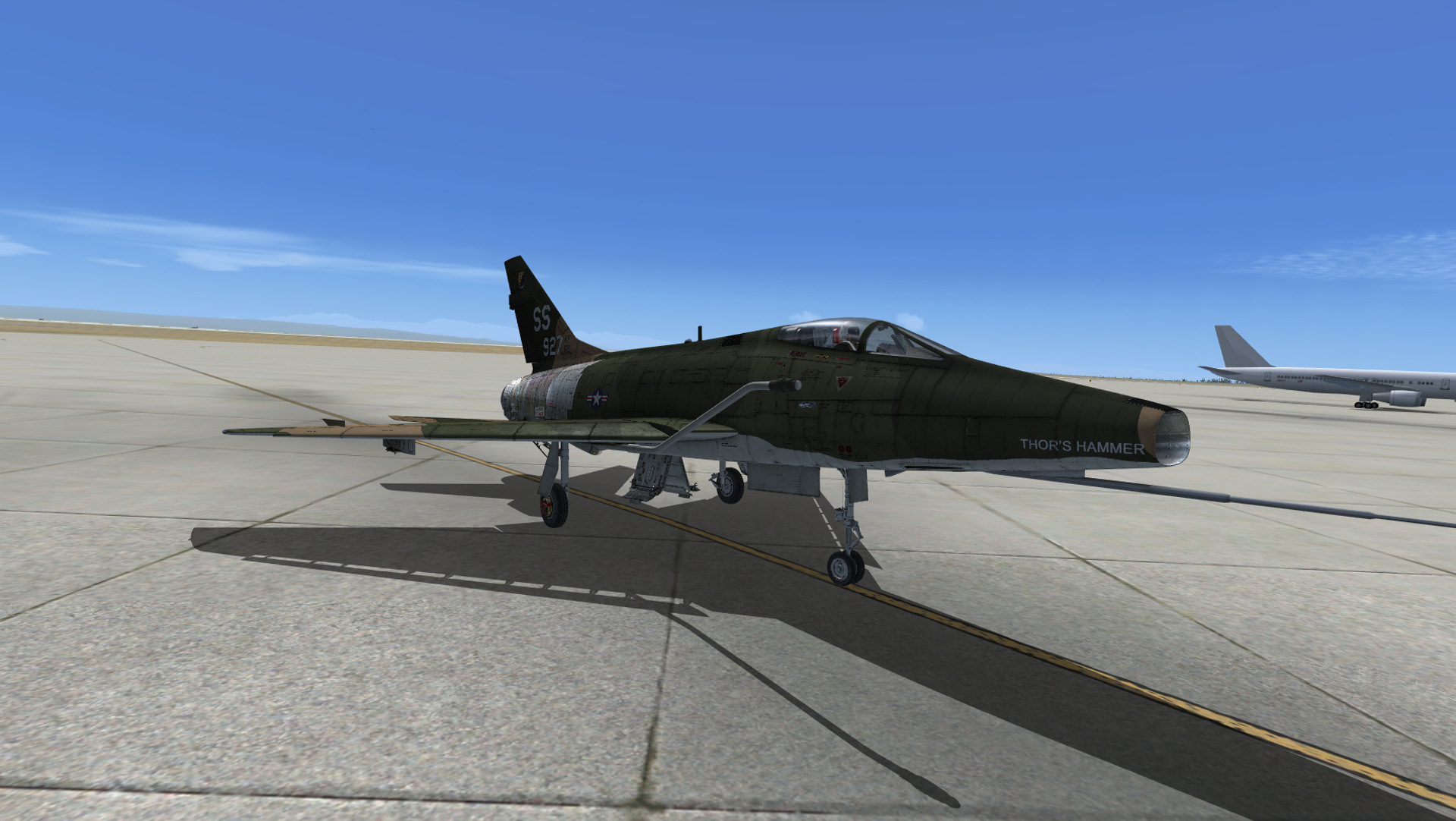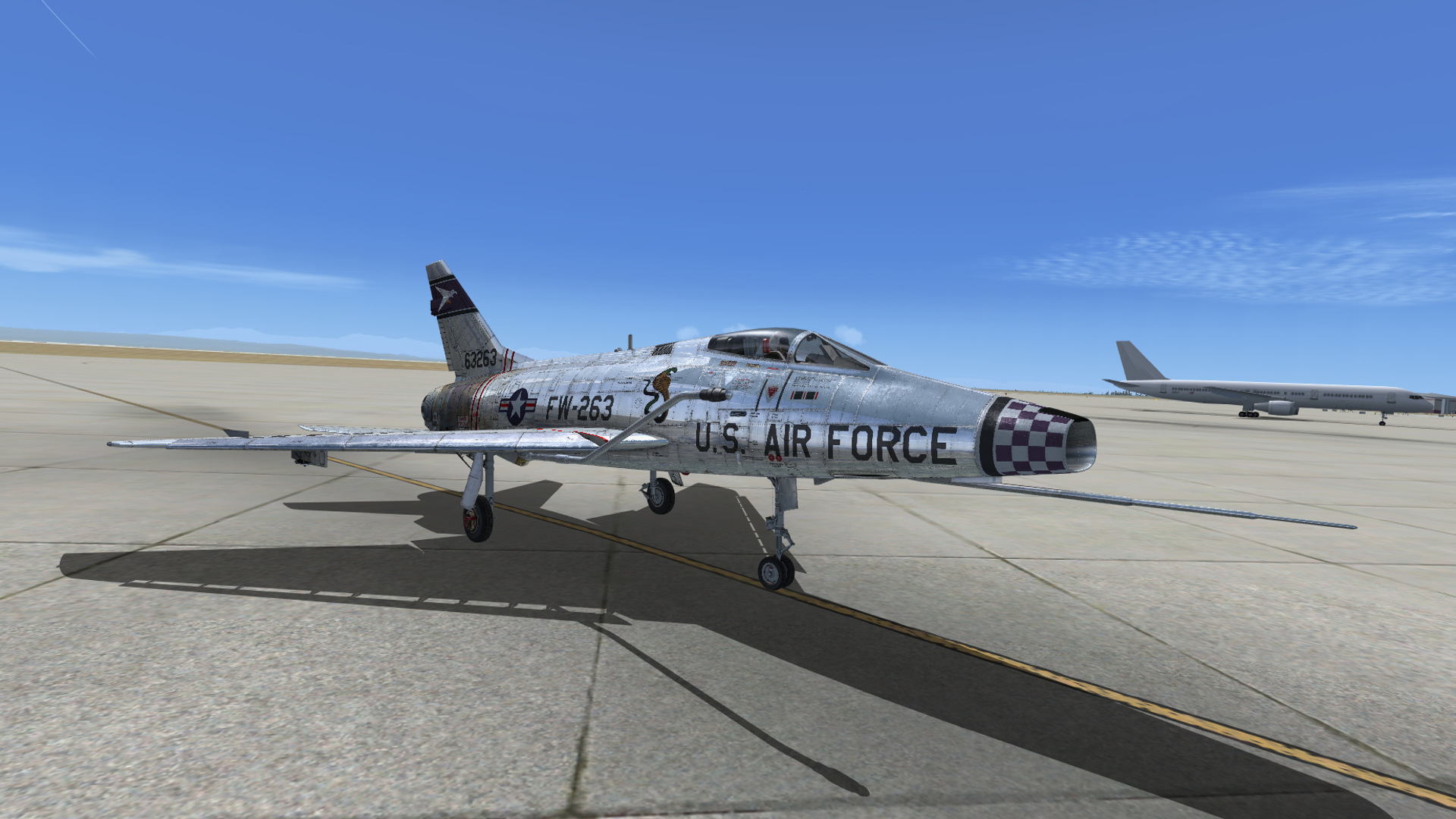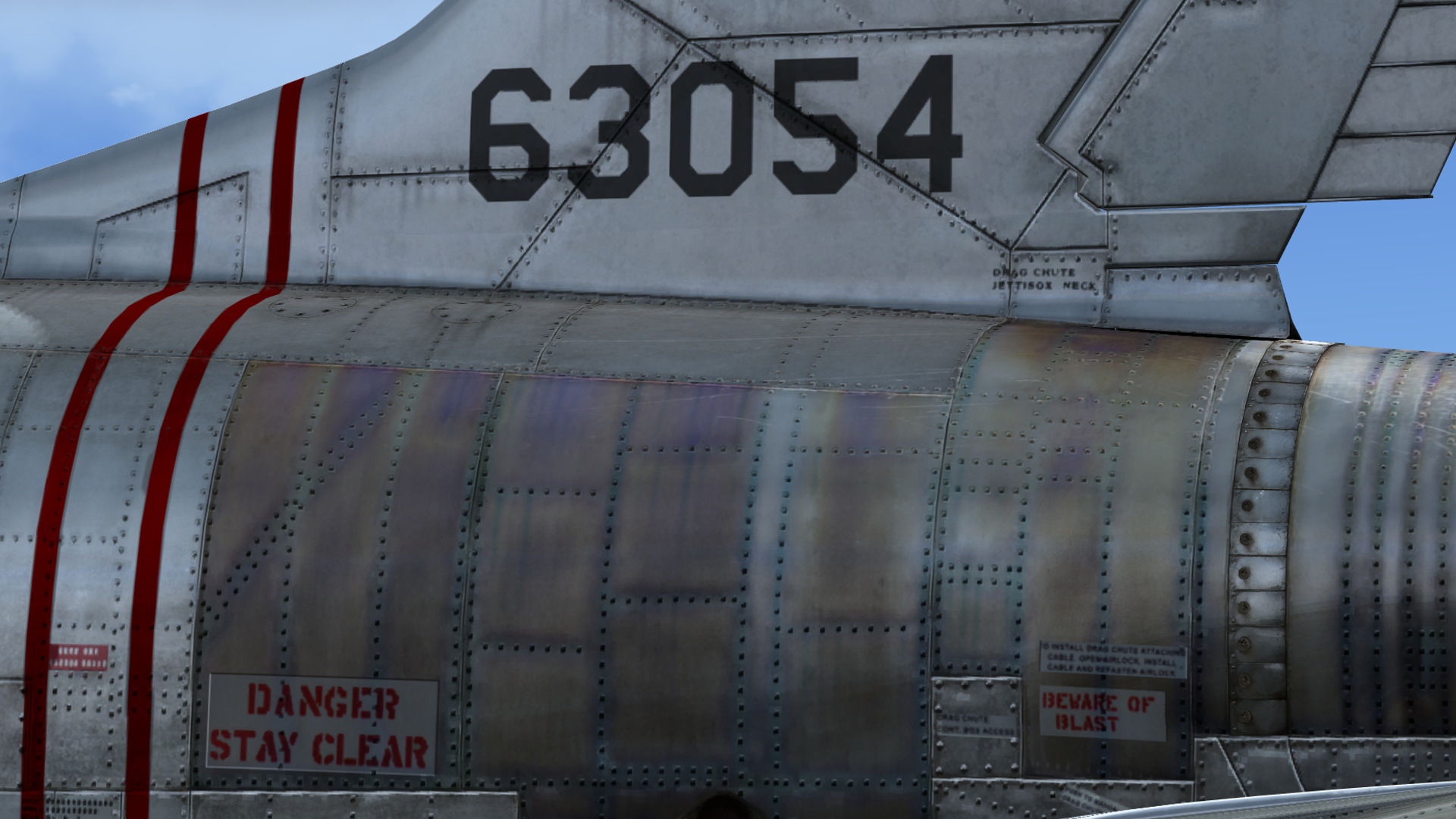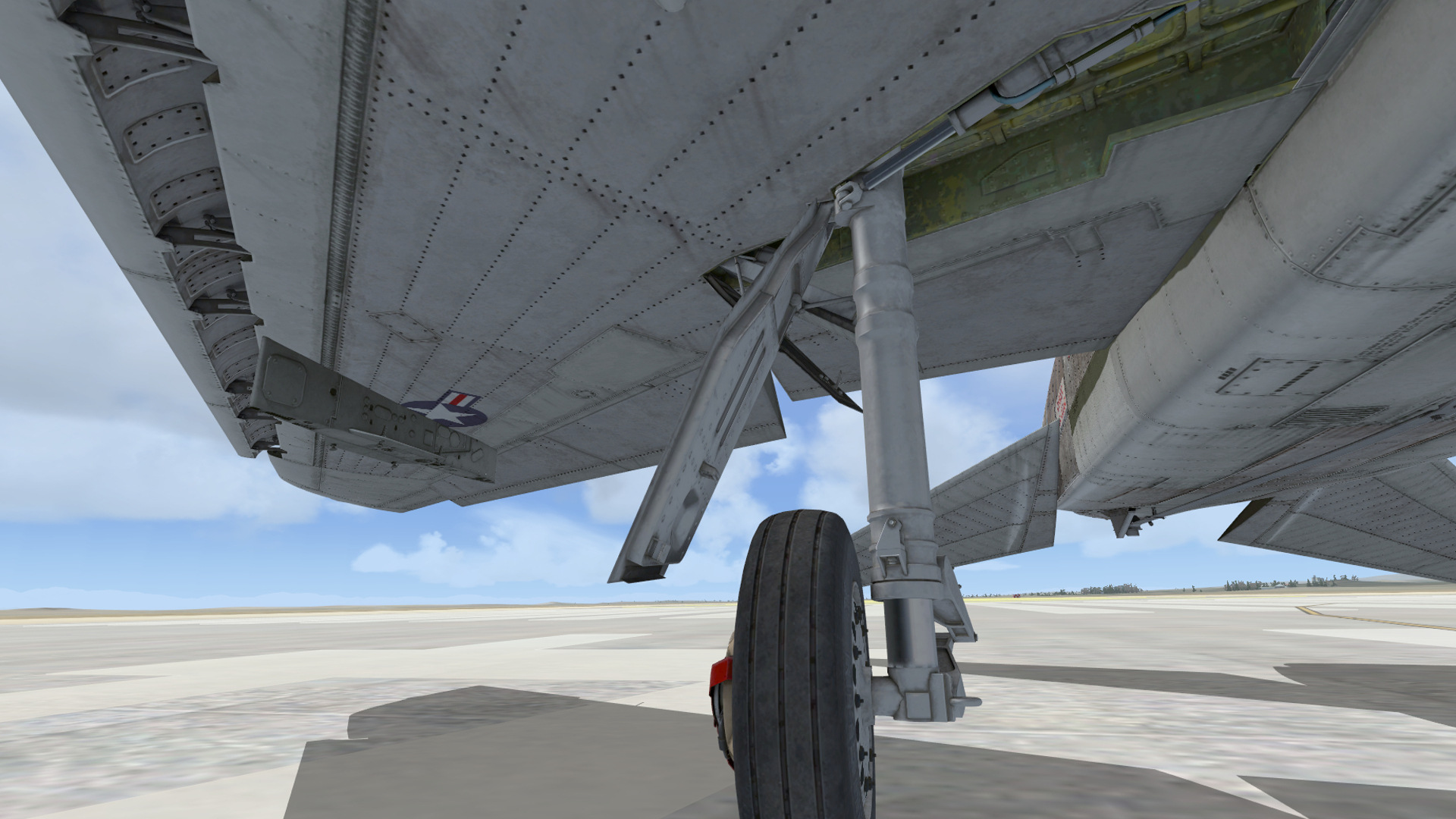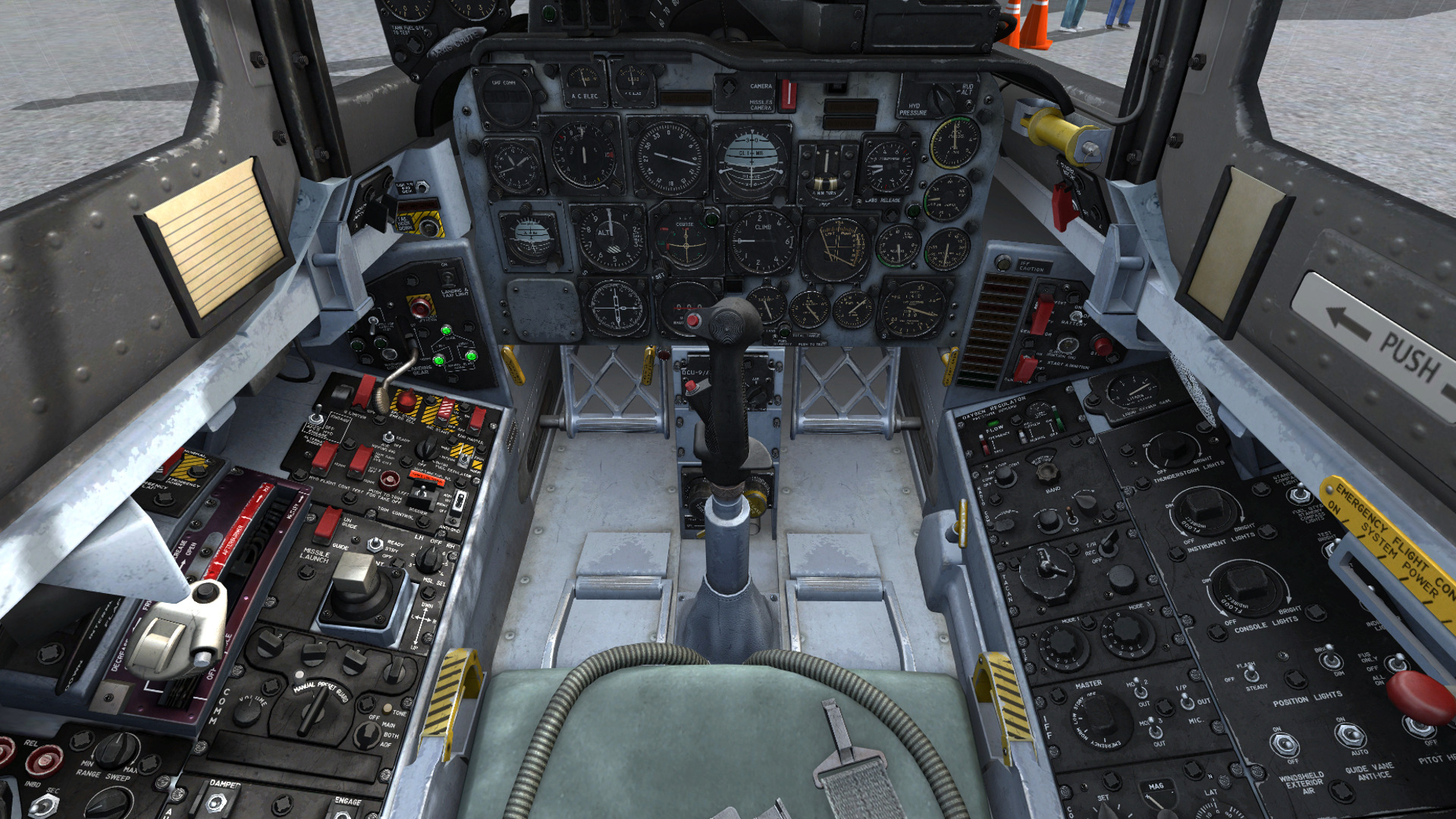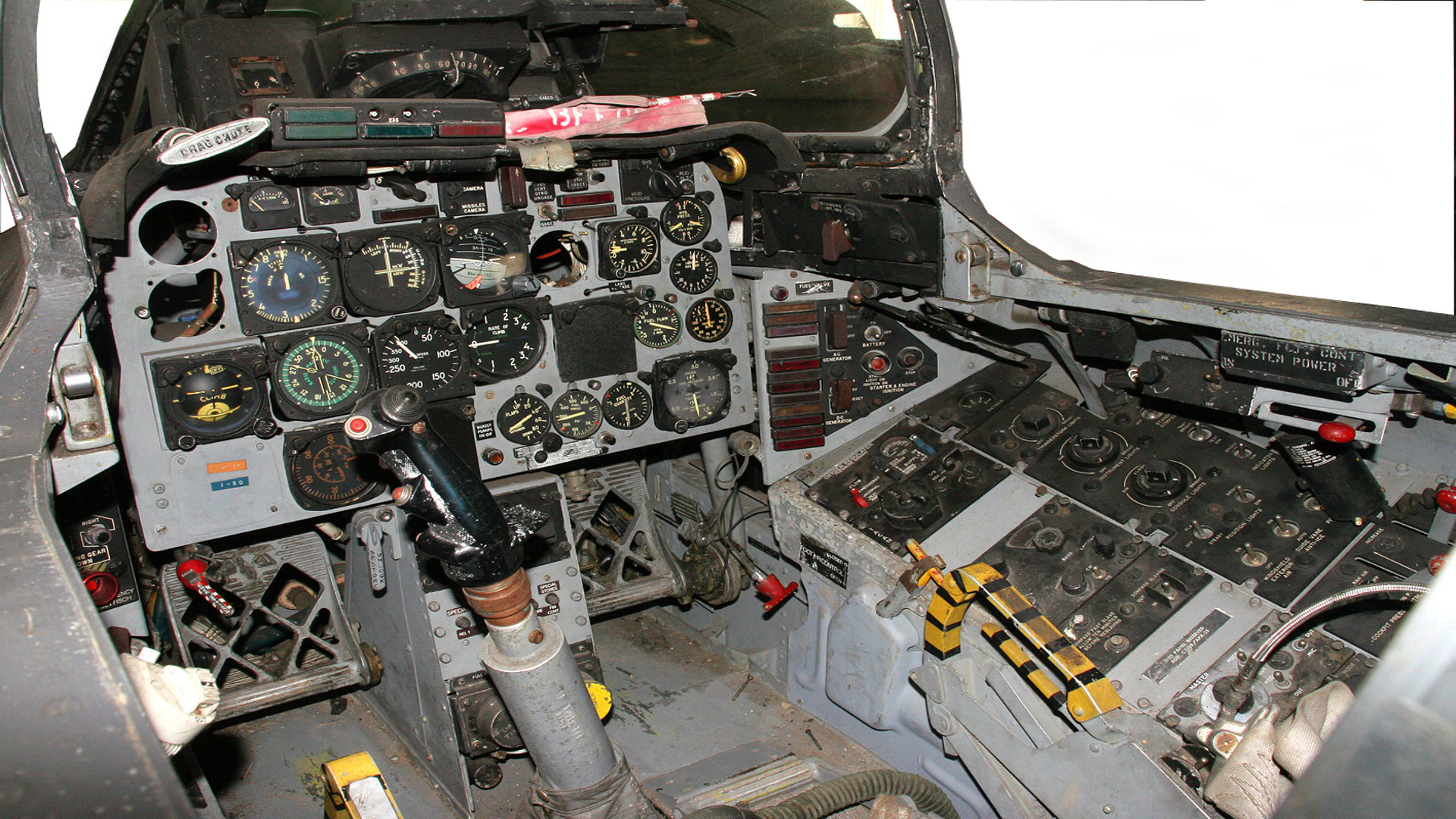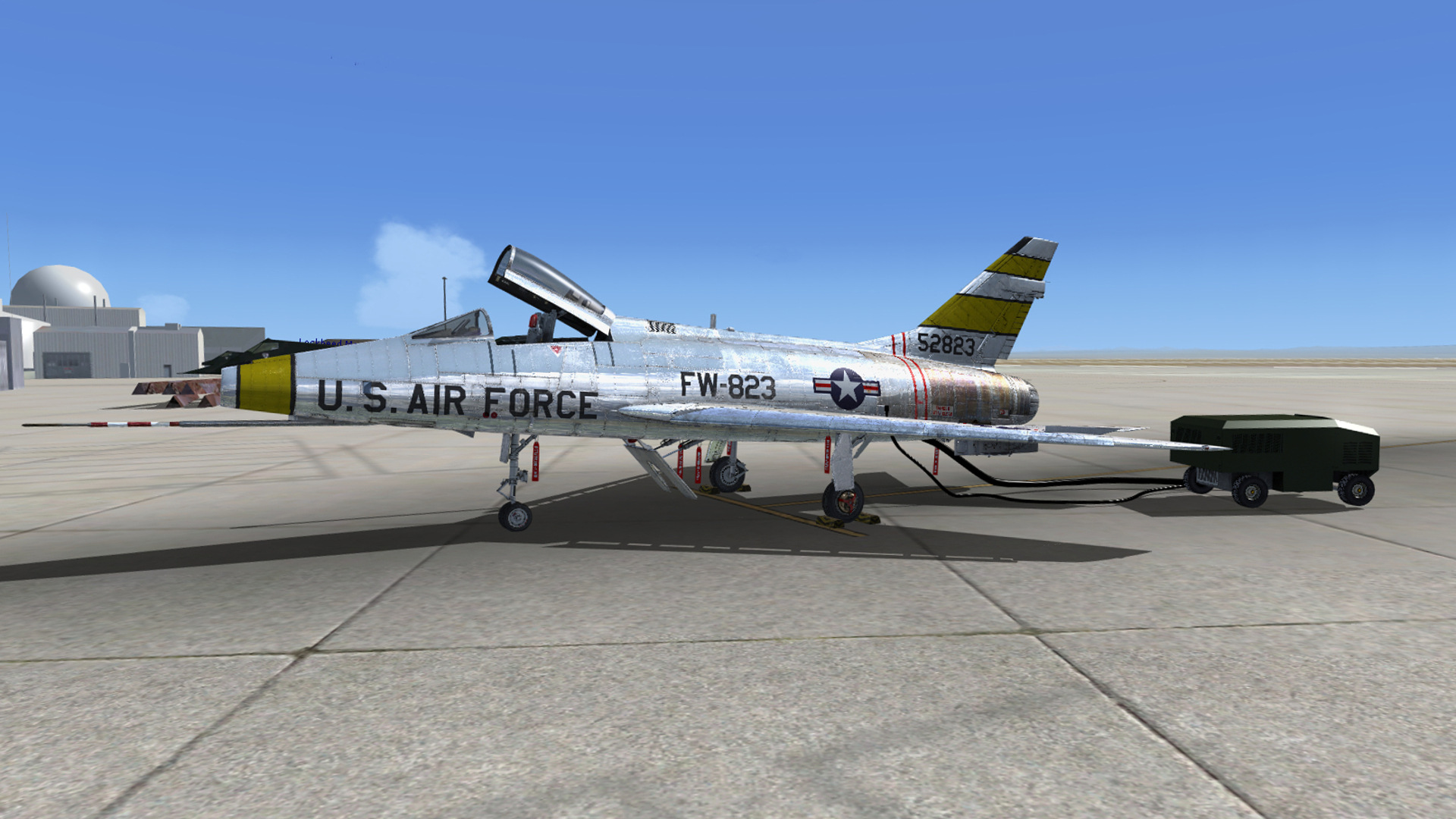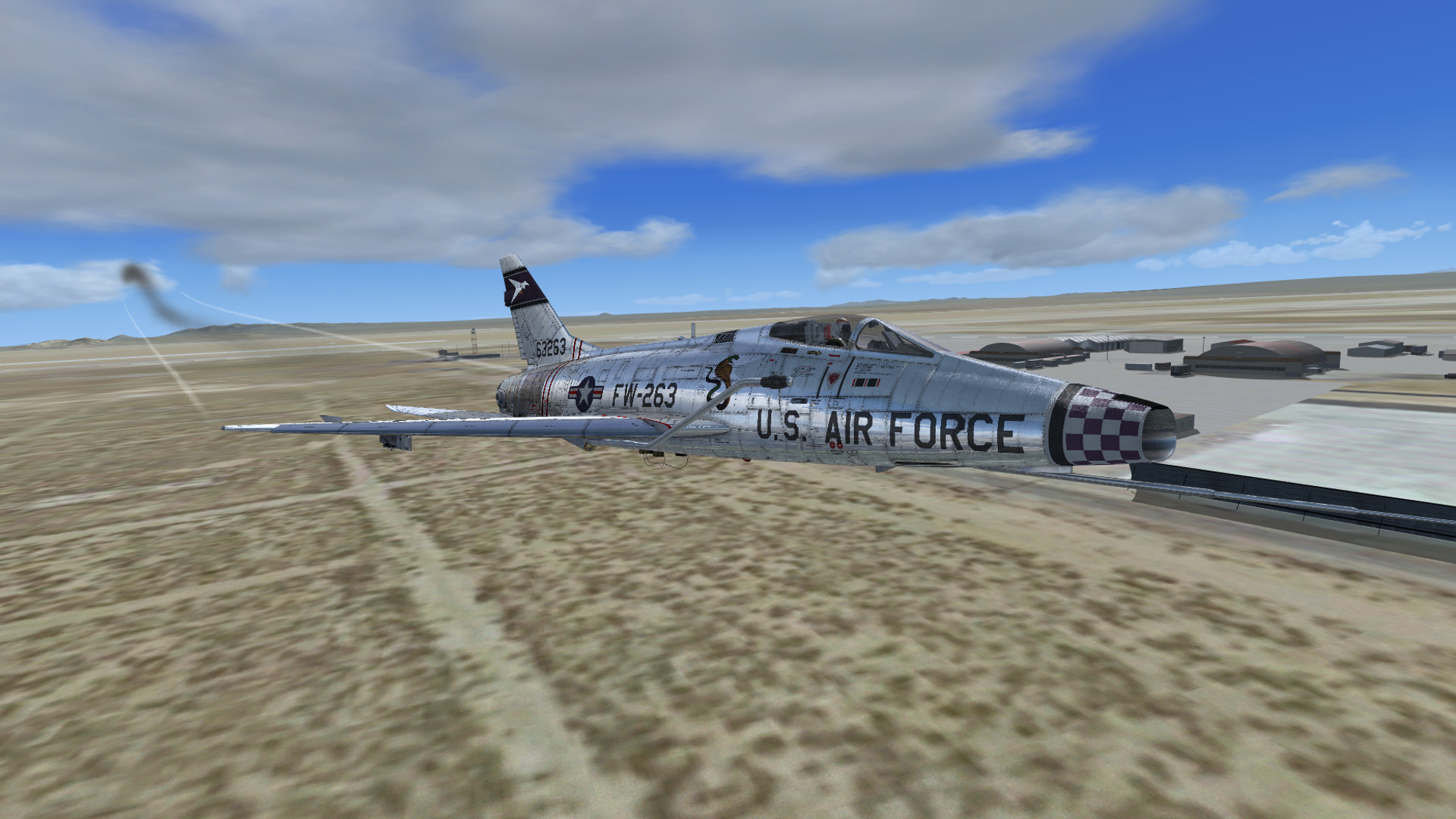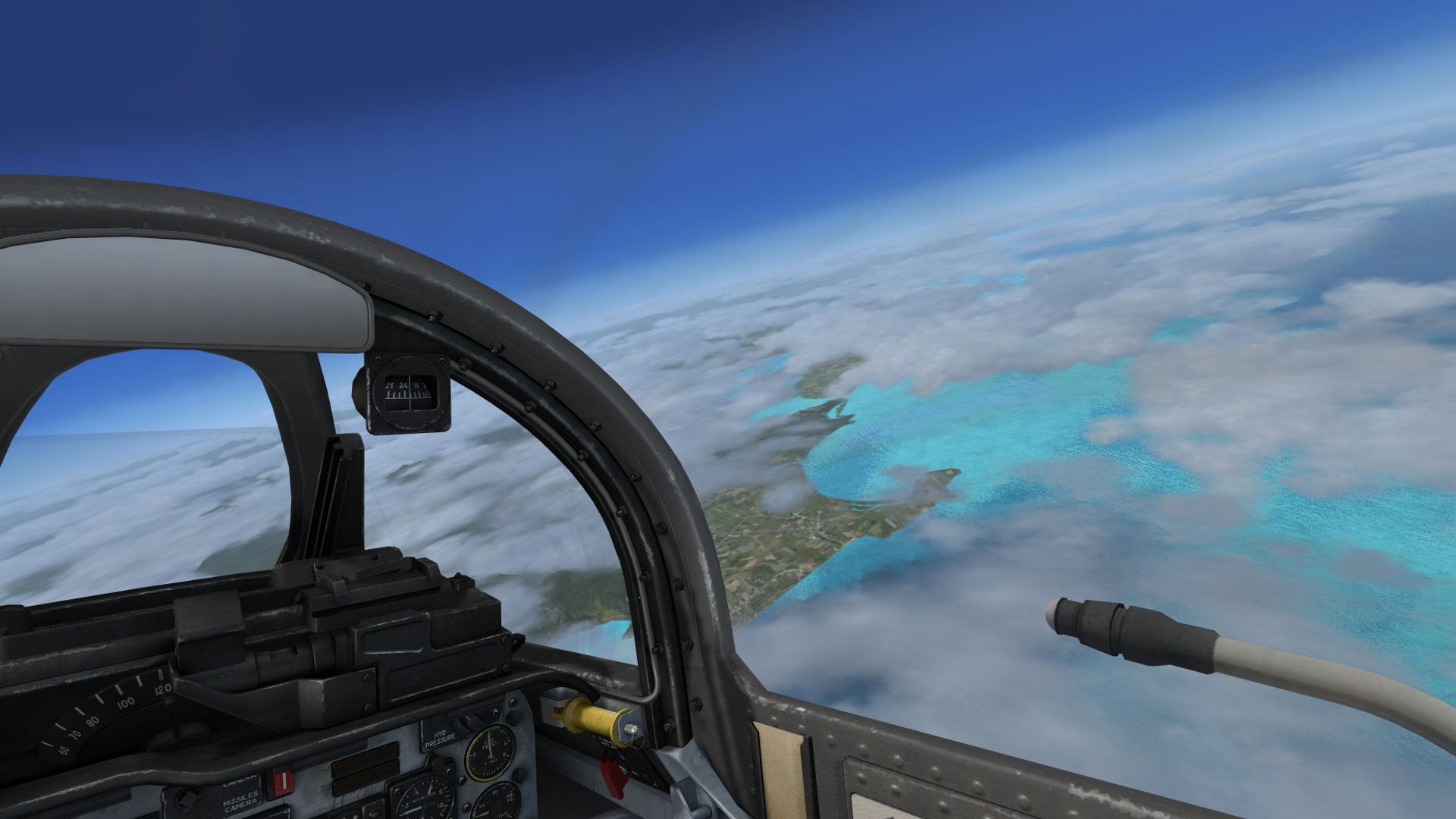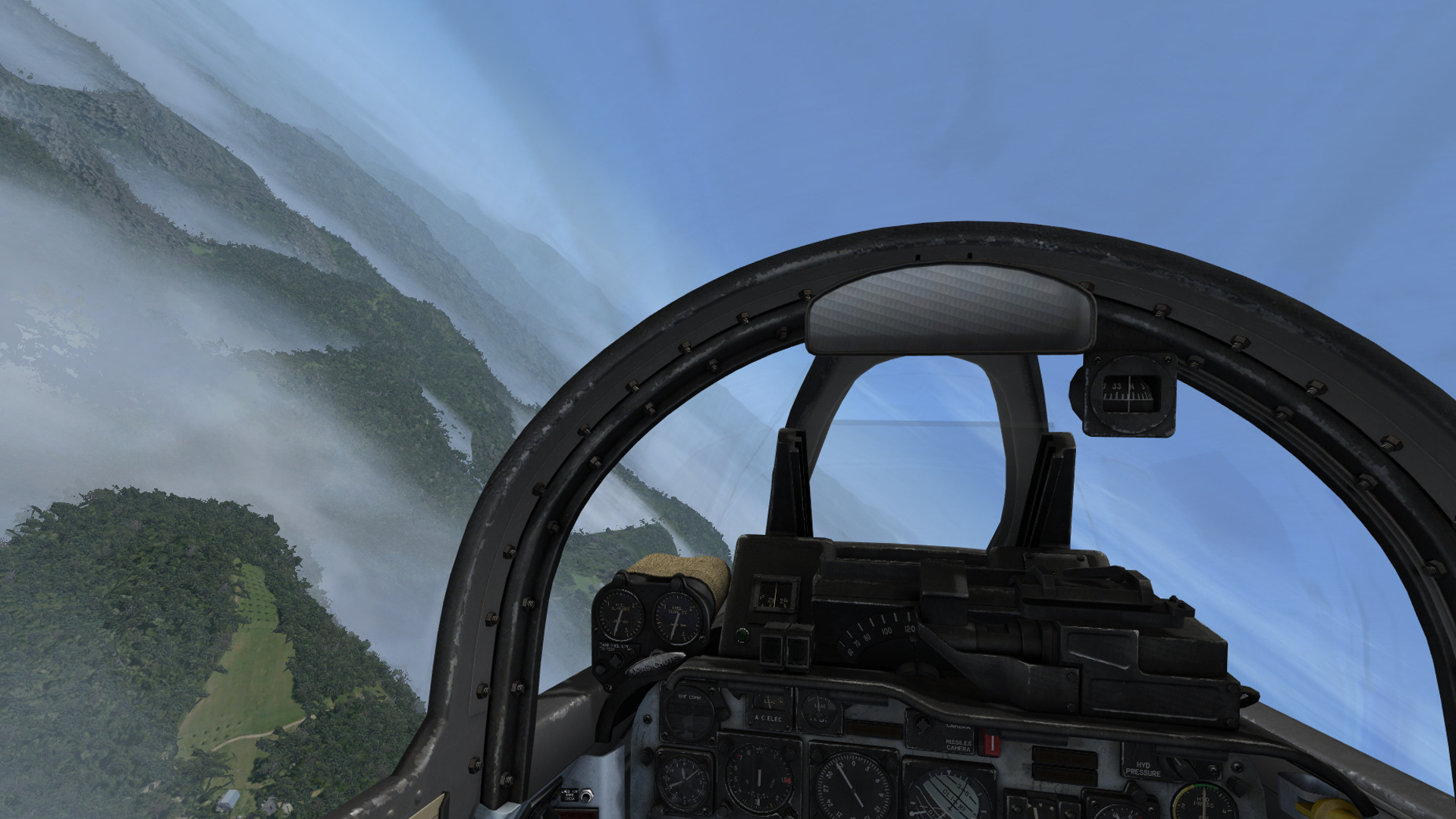Introduction
I always look forward to reviewing Milviz products as I have come to expect very high standards of them. Will the F-100 Super Sabre or the 'Hun' live up to my expectations?
Milviz's creation is of the F-100D, the most widely produced variant of the Super Sabre which first flew on the 24th January 1956. 1,274 airframes were built, the Mark D, a single seater aircraft, had more advanced avionics, larger wings and tail fin than its predecessors. The F-100D was also fitted with landing flaps, the first version of the aircraft to have them.
This review was undertaken in FSX only but references to P3D are made in the install process.
Background
In January 1951 the North American Aviation Company delivered an unsolicited proposal for a supersonic aircraft which was a development of the successful F-86 Sabre that saw in action in Korea at that time.
Originally called the Sabre 45, and later in 1951 designated the F-100, initially the USAF ordered two prototypes in January of 1952. The first of these prototypes flew seven months early in May 1953 which heralded the start of an evaluation period by the USAF until December 1955. This evaluation period threw up many design deficiencies which resulted the USAF declaring the aircraft was not ready for wide-scale deployment despite its superior performance; The Super Sabre was the first USAF aircraft able to go supersonic in level flight.
There were two particular issues with the aircraft that needed to be addressed. The aircraft could develop a sudden yaw and roll, too fast to be corrected by the pilot, which created sufficient stress to the airframe to cause the aircraft to disintegrate. This trait killed one of the F-100's test pilots
The second major issue was a problem with the handling of the aircraft at a high angle of attack. The swept wing could develop a stall at the wing tips that could result in a violent pitch up. At low levels, with insufficient room to recover, this could be fatal and came to be known as the 'Sabre Dance'.
In its service, some 889 F-100's were lost in accidents alone, and this out of a total production of 2,294 airframes.
Operational History
The F-100 entered service in September 1954. The next thirteen days saw no less then six major accidents, causing the fleet to be grounded until early 1955. When events in Europe, particularly the building of the Berlin Wall, caused the USAF to reverse its grounding decision and push the Super Sabre into frontline service.
Improvements came as the aircraft developed and new marks came into service. The Vietnam War saw the Super Sabre thrown into combat. It was quickly realised that the Super Sabre was at its best in a ground attack role in which it became the aircraft to complete the most missions by any single aircraft type in the war, 360,283 sorties in all.
No F-100 was lost to enemy fighters during the war but 186 aircraft were lost to ground fire, 7 to enemy attacks on airfields, and a further 45 crashed in operational incidents. It was during the Vietnam War that the aircraft gained the nickname 'the Hun', an abbreviation of the hundred in F-100. Despite there being a number of websites devoted to this aircraft and a general atmosphere of nostalgia about it, it seems that the name ‘Hun’ was not always a term of affection, indeed a limerick was coined about the Hun:
Don’t give me a One-Double-Oh
To fight friendly or foe
That old Sabre Dance made me Sh*t in my pants
Don’t give me a One-Double-Oh.
The USAF retired its Super Sabres in 1972 with the National Guard retiring their aircraft in 1979. The retired aircraft were replaced by the LTV A-7 Corsair II, the A10 Thunderbolt II and the F-4 Phantom II.
Availability, Installation, & Configuration
The F-100D Super Sabre package is currently available direct from Milviz and their product resellers as a 'download only' product. On the Milviz web site, the product is priced at US$49.99, or the equivalent on currency cross rates.
A zip file is downloaded for the package and it contains a single executable of approximately 390 MB. Installation size is 1.2 GB. The installation process provides a menu which enables the user to decide which platform the installation is to be completed on. My system has only FSX installed on it and so it offers only one install option. You will note from the illustration below that this screen is also used to uninstall the product.
Model Features
Once the version is selected, the install process takes a couple of minutes, after which the Milviz Add-on Management System (MVAMS) is displayed.
The MVAMS appear as a moveable window in Milviz's trademark orange colours and allows for the following:
Default Settings (Tick or untick):
Cold and dark
Ready to fly
Pitot tube folded
Show GPU
Turn on Thunderstorm Light
Weapon Loadout (Select from list for each Pylon Type):
Outer Pylon (Weight increase detail by selection)
Interim Pylon (Weight increase detail by selection)
Inner Pylon (Weight increase detail by selection)
Guns loaded (Yes or no)
Miscellaneous settings:
Coms Channel Pre-sets (20 manually entered values with Scroll Bar pre-set number.)
Show Chocks (tick/untick)
Show Ladder (tick/untick)
Show Reds (tick/untick)
There are also keyboard assignment settings available for the drag chute, NWS, Radar Reject and Trigger.
Once the above settings are fed in you are ready to go. The default values are for the aircraft to be ready to fly, with the pilot in place and fuel at 100%. All other settings are at their unticked state. Finally there is a button to set your configuration as the default configuration. This configuration can be changed from the Add-On / F-100D menu whilst in the simulator.
This tool is not part of the sim launch, but rather a pre-configuration device. Once set up, it can be closed or minimised. At the bottom of the MVAMS screen there is a button to set the current settings to the default, and in the weapons loadout settings there is a button to send the current loadout to the sim. This allows you to change the loadout whilst in the simulator.
External Model
The external model looks very good. There is a large amount of detail and the external model when looked at as a whole looks very professional indeed.
There are ten paint schemes provided, the two screen shots above are included and a selection of the others are shown below.
There are many animations supplied with the Milviz F-100D Super Sabre. These include all of the standard control surfaces, the speed brake, canopy, wheels up and down and then some less usual things like the folding pitot tube and working exhaust petals. The hydraulics associated with animated parts of the aircraft are modelled so that when you shut down the aircraft these doors and surfaces sag.
The exterior model is superbly detailed with beautiful textures to all surfaces. These surfaces include heat tarnished panels where you would expect them to be. The Vietnam combat colour schemes don't have the shine as it is a matt combat paint, but it has the rear area hot jet engine area tarnished and un-painted as the real aircraft was. The USAF day to day silver schemes appear burnished, and the two Thunderbird schemes shine in their mirror like display colours.
The detail on the exterior of the model is superb, heat discoloration, dirt and scratches to the paintwork, detailed wheel bays and undercarriage legs, tread on the tyres etc.
When 'dirty', the various voids like the undercarriage well are well detailed, the tyres have treads and every rivet, nut and bolt seems to be visible.
Internal Model - Cockpit
There is very little to say about the cockpit except that it is near to perfection as I have ever seen in an FSX virtual cockpit. Just look at the screenshot below and compare it with the real thing below that. It is a superb recreation of the real aircraft's cockpit, with so many functional switches, leavers and gauges all put together in the most highly detailed shell as to almost make you believe you are in the real thing.
There is one nice touch that I must draw attention to. In the MVAMS configuration of this aircraft you are given a choice of cold and dark or ready to fly. With this model, cold and dark is what is says it is, but ready to fly is different. Ready to fly places you in a cold and dark cockpit and then proceeds to automatically go through the start-up procedure so that you can watch an invisible hand operate all the required switches and levers etc. until the aircraft is ready to fly. Do this enough times and you will soon know the requirements to get the aircraft from cold and dark to ready to go without that need for checklists and switch hunting. It's a great innovation and I would plead to Milviz to incorporate this in all future releases and, if possible, to retrofit it to their current stable. I think it is just fantastic.
Sounds
Sounds are a very difficult thing to review as they are to a certain extent subjective, and so I base my opinion on three things. First, can I make a comparison with a sound recording of the real thing, second does it feel and behave right and thirdly how detailed is the sound package? There are usually a few video clips on line to provide the real thing and then it is a matter of applying the does it feel right given the tone and other changes when the listener is at various different aspects to the aircraft and are there any little things that put the icing on the cake.
The sounds are entirely convincing throughout the throttle range and view aspect range. At Idle on the ground, there is that hollow ringing sound an Idling jet of this one's era produces, and the roar of the afterburner is deep and throaty.
There are a few of those nice little details, for example the GPU, when in place, grumbles away like the diesel engine it is, and as the wing angle of attack increases, so there begins the sound of buffeting which might signal an impending stall. Drop the speed brake gear or the flaps and the sound of the drag is immediately obvious. These are just a few of the nice detail that makes this sound set stand out.
General Characteristics & Performance Specifications
The general characteristics and performance specifications for the F-100D Super Sabre are provided in the tables below. This is based on data provided by Milviz, and general research sources. Some of this data varies between sources and also may be an approximation due to that variance in data and the specific aircraft modelled by Milviz.
General Characteristics
| Crew | One |
| Passenger Capacity | n/a |
| Length | 47 ft 1 in (14.35 m) |
| Wingspan | 38 ft 9 in (11.81 m) |
| Height | 16 ft 2.75 in (4.95 m) |
| Empty Weight | 2,0638 lb (9,361 kg) |
| Fuel Capacity | 1,189 US gal (4,500 l) |
| Maximum Take-Off Weight (MTOW) | 38,048 lb (17,258 kg) |
| Power Plant | 1 x Pratt & Whitney J57-P-21/21A turbojet |
Performance Specifications
| Maximum Speed | 765 kn/h (880 mph, 1,417 kph, mach 1.3) |
| Combat radius | Intl fuel: 242 NM (278 mi, 448 km) max fuel: 460 NM (529 mi, 852 km) |
| Ferry range | 1,750 NM (2,014 mi, 3,210 km) |
| Service ceiling | 39,600 ft (12,070 m) |
| Combat Ceiling | 46,900 ft (14,295 m) |
| Rate of Climb | 19,000 ft/min (348 m/s) |
| Dry thrust | 10,200 lbf (45 kN) |
| Thrust with afterburner | 16,000 lbf (71 kN) |
Flight Characteristics & Dynamics
Two flight models supplied with this product. The default flight model is accurate to the aircraft as it was in production and so using the default aircraft you may get to do the Sabre Dance with this aircraft, and you will definitely become aware of its wicked side. Milviz recognise that this might be too challenging for some and so offer a way to dumb down the flight characteristics and turn this aircraft into an easy to fly, fun add-on. It may suit you but not me. I prefer to fly as close to reality as I can.
Adopting the relaxed model requires the user to make changes to the aircraft.cfg. It is a simple change and the process is well documented in the user guide. However there is a warning that TacPack may not work properly if you make this change.
The aircraft seems to fly in a similar envelope to that described for the real aircraft, the nose up stall is there to trap you. The dry heat top speed at ground level is accurate and taking the aircraft up to the operating service ceiling was possible. Landing is fast, approach speed is about 170 kts with touch down at about 145 kts. Minimum control speed is just 138 kts, so the margin for error is very small, the aircraft is not easy to land. All these speeds match the real thing.
My first flight was interesting. I took off with afterburner and pulled back on the stick slightly afraid of the dance. Free of the ground and with the gear up I increased speed and climbed gently as I could. I did this with no problems, and so I pushed the nose up. The greater the angle became, the louder buffeting could be heard. This noise precedes a stall and I was starting to dance the Super Sabre. Suddenly I was going nowhere but into the ground. Dance low and your flight is over.
Back in the air again I took things more carefully and started to really enjoy this aircraft. Like many jets of its time it belches out black smoke as it takes to the air, it takes a bit of getting used to and you have to know the aircrafts limits but it is fun to fly. I think that this aircraft's fragility in some aspects is part of the delight in flying it, it presents a challenge that is fun to get to grips with and to learn your way around. Just as you think you have mastered it, you have to land safely, another difficult thing to manage.
As for performance, I found no real drop in frame rates, My test PC is a high spec machine (see below) but the frame rates I was getting indicated that this add-on would perform well on a lesser PC.
Documentation
The install process creates two documents in the add-ons sim object folder. These are a full edition manual and a smaller user guide.
The user guide is a thirty two page document that provides all you need to know on how to install the aircraft, configure it, a brief introduction to the aircraft, technical requirements and advice and how to get yourself up in the air and down again. There is also a section on TacPack integration and the use of weapons.
This, the smaller of the two documents seemed to be fairly comprehensive in in terms of setting up the simulator, TacPack integration and using the various weapons systems, but there is another document as well, the F-100D Manual Full Edition. Essentially this is a PDF version of the aircraft's original manual. I always like to see this sort of additional information included with an aircraft addition as it usually is an interesting read and shows that the sim manufacture has enough confidence in the product to give you the opportunity to compare their product with the real thing, if only on paper. All the information you need is there, but it would be nice to have some checklists for the main processes needed to fly this aircraft, perhaps built into the kneeboard or something similar. Wading through the original aircraft document is a bit of a pain.
Both these manuals are available before purchase at the Milviz product page. Please refer to the end of this review for a link to the product page. There is also a paint kit available at the same site as the manuals that consists of a set of PSD layered documents that allow the repainting of the F-100D whist retaining all of the aircraft's detail.
Value for Money
Some would say that US$49.99 is on the expensive side, and I suppose it is. Having said that this is a complex sim and you get what you pay for. Personally I think this addition to your FS is worth it, but I can see that others would not.
Some wanting to get deeper into their sim with a more complex add-on might be tempted elsewhere on price, which is a shame as this particular add-on has some nice helpful details, especially the way a ready to fly configuration is implemented as an automatic but visual process, This is ideal for helping move up from run of the mill to something special like this.
However, as an experienced FSX user I would consider it well worth the money. For those with a tighter budget and are wondering whether to risk making the purchase and worrying about the cost, well this add-on is well worth the gamble, and given that it is a Milviz product, it's not much of a gamble anyway.
TacPack Integration
TacPack is a combat engine for Microsoft Flight Simulator X made by Vertical Reality Simulation and includes animated weapons modelling with sophisticated and highly integrated fire control and radar suites

The Milviz F-100D can be used with or without TacPack. If TacPack is present, the add-on will detect this, integrating and providing the additional functionality automatically.
TacPack software is a payware product and is not included with the Milviz F-100D, but can be purchased separately from by Vertical Reality Simulations. This review was made without TacPack integration.
Technical Requirements
Windows Vista, Windows 7, (use in all other versions of Windows is unsupported);Microsoft Flight Simulator FSX with SP1 and SP2 installed (or Acceleration Pack), FSX Steam Edition or Lockheed Martin Prepar3d Flight Simulator (v2.5 or v3.0 with latest hot fixes); and
2.6GHz or higher CPU, 4GB RAM, DirectX 11 compliant video card (for P3D) with 1024 MB of VRAM, and 2GB of available HDD space.
Review Computer Specifications
The specifications of the computer on which the review was conducted are as follows:Intel Core i7 6700K Skylake Processor 4.00 GHz;
NVidia GTX 970 4GB;
16GB DDR4 2133 MHz ;
Windows 7, (64bit); and
Microsoft Flight Simulator FSX Acceleration.
Conclusion
An exceptionally good aircraft add-on for FSX or P3D.
Milviz products are on the expensive side and their documentation relies on aircraft documentation not produced by themselves. The latter is a bit of a double edged sword. The fact that they can rely on real world documentation speaks volumes about their products, but their downside is that it is hard to find things in them as there is no 'go to' index and scrolling through the pages from the non-interactive index only to find the page is not what you want is a pain. Other than that, this is an excellent product, and I would not have any hesitation in highly recommending it.
So, dare you risk the Sabre Dance? I did, and I am glad I did. Another great add-on from Milviz.
Verdict and Scores
Verdict
| A lot of care and attention of detail has gone into the creation of the Milviz F-100 Super Sabre, it's another great product from Milviz and a great addition to anyone's sim hangar. |
Scores
For |
Against |
Category |
Score |
|---|---|---|---|
| A superb sound set | A little expensive | Internal Model | 10 |
| Good paint kit | It would be nice have checklists inside the sim | External Model | 10 |
| Excellent documentation | . | Flight Characteristics (does it fly by the numbers) | 10 |
| A good, flexible aircraft to tutor someone | . | Flight Dynamics (does it feel like what it looks like) | 10 |
| . | . | Sounds | 10 |
| . | . | Documentation | 9.5 |
| . | . | Value for Money | 9.5 |
Overall Score
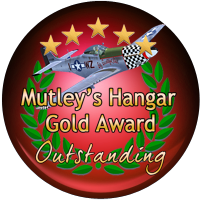
The Milviz F-100 'Super Sabre' is awarded an overall Mutley's Hangar score of 9.9/10, with an "Outstanding"
|





